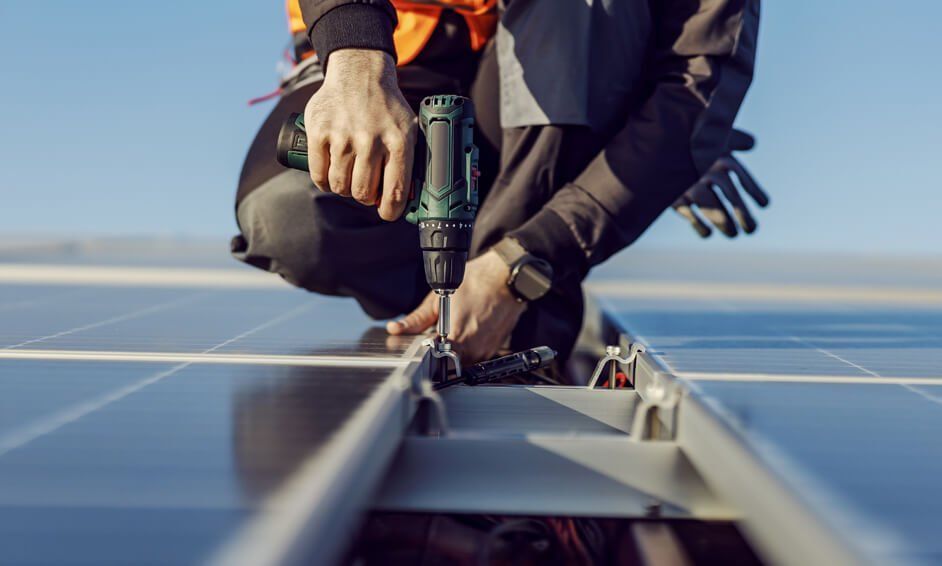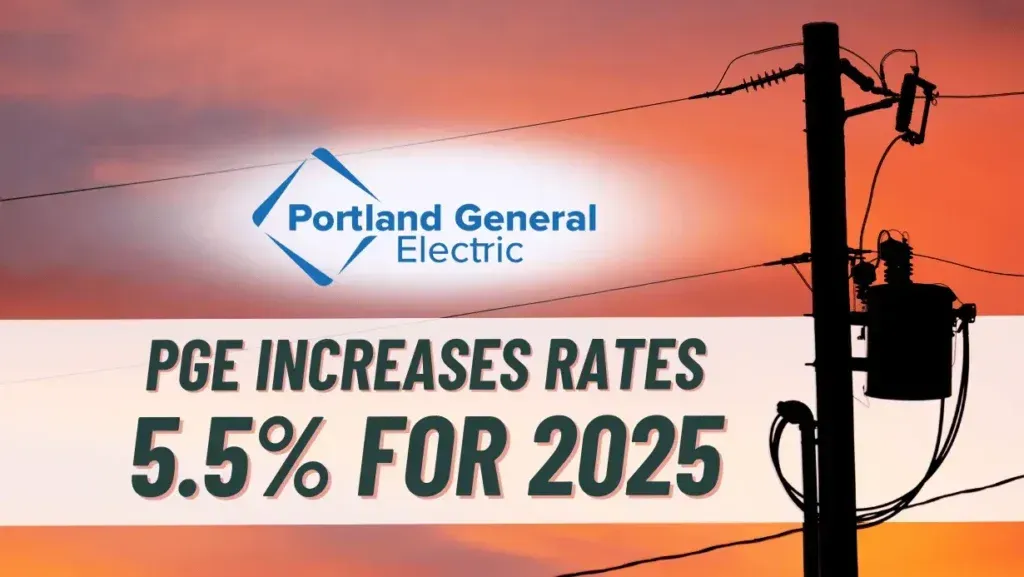How Solar Panel Installation Can Reduce Your Energy Bills
Are your energy bills creeping higher each month? You’re not imagining it—and you’re definitely not alone. But there’s a bright solution (literally):
solar panel installation. More homeowners are turning to
solar power systems as a way to cut costs, gain energy independence, and do something good for the planet. In this blog, we’ll break down exactly how
solar energy systems can shrink your electric bill and why now is the perfect time to make the switch.
1. Solar Panel Installation: Your Ticket to Lower Energy Bills and a Greener Future
Ever opened your electric bill and thought, “Did I accidentally power the entire neighborhood this month?” You’re not alone. With rising energy costs and increasing concerns about the environment, homeowners across the country are searching for a solution that not only saves money but also reduces their carbon footprint.
Solar panel installation is one of the most effective ways to take control of your home’s energy usage. By converting sunlight into electricity through solar power systems, you’re generating your own clean energy—right from your roof. That means fewer dollars flying out the window every month.
Here’s how it works in a nutshell:
- Photovoltaic (PV) cells in solar panels absorb sunlight.
- This sunlight is converted into direct current (DC) electricity.
- An inverter then converts DC into usable alternating current (AC) power for your home.
- You use what you need, and in many areas, you can sell the extra power back to the grid. Yes, your house can be a mini power station!
And while it might sound like high-tech wizardry, solar energy systems are more accessible (and affordable) than ever before. Incentives, rebates, and tax credits make now the perfect time to make the switch.
So, if you’re tired of those monthly power bill surprises, stick around—we’re just getting started.
2. Breaking Down the Real Cost Savings of Solar Power Systems
Let’s talk numbers—because at the end of the day, it’s all about what lands in your pocket, right?
The idea of saving money with
solar power systems isn’t just marketing fluff—it’s backed by cold, hard data. Most homeowners who install solar panels see a 40–70% drop in their electricity bills within the first year. Some even wipe out their utility bills altogether.
Here’s how those savings add up:
- Reduced Monthly Bills: Solar reduces the amount of electricity you need to buy from your utility.
- Net Metering Credits: Many states offer net metering programs. If your panels generate more electricity than you use, you can send it back to the grid and get credits. It’s like rolling over your unused minutes from an old cell phone plan—but with actual cash value.
- Federal Solar Tax Credit: The current federal investment tax credit (ITC) allows you to deduct 30% of the cost of installing a solar energy system from your federal taxes.
- State and Local Incentives: Depending on where you live, you could snag additional rebates or tax incentives that further slash your installation cost.
Now imagine this: Instead of dreading your electric bill, you start looking forward to seeing how much you’ve saved (or earned) each month. Sounds good, right?
And remember, once your solar panels are installed, the sun doesn’t charge by the hour. Your energy? Totally free.
3. Solar Energy Systems: Low Maintenance, High Impact
One of the biggest misconceptions about
solar energy systems is that they’re high maintenance. But the truth? They’re kind of like the cat of home upgrades—quiet, independent, and pretty much take care of themselves.
Key benefits of solar panel reliability:
- Durability: Solar panels are designed to withstand everything from snowstorms in Oregon to sizzling Texas heat.
- Minimal Upkeep: Most systems only require an occasional rinse to remove dirt and debris (and maybe a friendly wave to your new power plant on the roof).
- Long Lifespan: Quality solar panels can last 25–30 years or more with very little performance degradation.
- Monitoring Systems: Many setups come with apps that let you track energy production and usage in real-time. It’s oddly satisfying watching your energy savings in action.
Maintenance Tips:
- Keep panels clean: Use a garden hose to spray them off once or twice a year.
- Inspect for debris: Trim back trees that may cast unwanted shade or drop leaves on your panels.
- Schedule a professional check-up: Once every couple of years is typically enough.
In short, solar panels won’t add to your to-do list—but they will subtract from your electric bill. That’s a win in our book.
4. Installing Solar Panels is Easier Than You Think
Gone are the days when
solar panel installation meant complex, drawn-out construction projects. With modern technology and experienced solar providers, getting solar installed on your home is surprisingly straightforward.
What to expect from the installation process:
- Site Assessment: A team will evaluate your roof’s condition, orientation, and sunlight exposure.
- System Design: Based on your energy usage and home layout, they’ll customize a solar energy system that fits your needs.
- Permitting and Paperwork: Your installer handles the red tape, so you don’t have to Google “how to get a solar permit in New Mexico.”
- Installation: Most residential jobs are completed in 1–3 days.
- Grid Connection: Once installed, your utility company will inspect and connect your system to the grid.
The result? A sleek, energy-producing machine quietly working for you day in and day out.
Plus, there’s something undeniably cool about watching your energy meter run backward.
5. The Environmental and Social Benefits of Going Solar
Yes, solar energy storage system save you money—but they also help save the planet. And if you’re the kind of person who recycles religiously and brings your own bags to the grocery store, this one’s for you.
By installing solar panels, you’re doing more than just cutting costs. You’re reducing your reliance on fossil fuels and helping create a more sustainable world for future generations.
Environmental benefits:
- Reduced carbon emissions: A typical solar home offsets 3 to 4 tons of carbon emissions each year—that’s like planting 100 trees annually.
- Cleaner air: Fewer fossil fuels = less pollution = better air quality.
- Water conservation: Unlike traditional power plants, solar panels require no water to produce electricity.
Bonus benefits:
- Energy independence: The more homes that go solar, the less reliant we are on volatile energy markets.
- Job creation: The solar industry supports hundreds of thousands of jobs across the U.S., from engineers to installers.
So not only are you saving money—you’re making a real impact.
Ready to Go Solar? Contact Infinity Solar USA Today!
Let’s Make the Sun Work for You—Not Against Your Wallet
If you’re in Oregon, Arizona, Washington, New Mexico, or Texas (or anywhere nearby), and you’re tired of energy bills burning a hole in your budget, it’s time to call in the pros. At Infinity Solar USA, we specialize in solar panel installation, solar energy systems, and solar power systems designed to meet your unique home needs and maximize savings.
Our team is here to guide you from that first curious phone call to the moment your panels start soaking up the sun. We handle everything—from permits and design to installation and maintenance. Best of all, you get peace of mind knowing you’re partnering with experts who care about your home, your savings, and our planet.
Call Infinity Solar USA today at 800-818-0598 and start your solar journey the right way!
Frequently Asked Questions (FAQ)
Q1: Will solar panels work on cloudy or rainy days?
A1: Yes! While solar panels produce more energy in direct sunlight, they still generate electricity on cloudy days—just at a reduced level. Even in states like Oregon and Washington, solar is a smart investment.
Q2: How much does solar panel installation cost?
A2: The cost depends on your home’s energy needs, system size, and location. With federal tax credits and local incentives, the average cost is much lower than people expect—and the long-term savings are well worth it.
Q3: What happens if I generate more energy than I use?
A3: That’s where net metering comes in! You’ll often receive credits from your utility company, which can lower your future bills even more.
Q4: Are solar panels bad for my roof?
A4: Not at all. In fact, they can protect the portion of the roof they cover from the elements. Just make sure your roof is in good shape before installation.
Q5: Can I still get solar if I don’t have a south-facing roof?
A5: Absolutely. East- and west-facing roofs can still produce a lot of energy. Your solar installer will design a system that works for your specific layout.
More Blog Posts
More Guides For You From Our Help Center
Service and Troubleshooting
Understanding your solar system performance
How to schedule a repair
Solar Financing and Incentives
How does net metering work?
- How Net Billing Works (And Why Export Credits Are Your New Best Friend)
- How "Buy All, Sell All" Works in Solar (And Why It’s a Great Deal for You)
- How Monthly Net Metering Works (Spoiler: It’s Like a Bank for Your Energy)
- What is Net Metering and Why It Matters in the Solar Industry?
- What Is 1:1 Net Metering, and Why Should You Care? (Hint: It’s Awesome)
Solar financing. Understanding your options
- Explore Your Financing and Cash Options for Going Solar with Infinity Solar USA
- Commercial Solar Solutions: What You Need to Know from Infinity Solar USA
- Solar Installation Costs and Financial Incentives: What You Need to Know from Infinity Solar USA
- Why Solar Loans Reamortize in Month 19: A Closer Look
System Performance
How to optimize your solar systems performance
How peak sun hrs works in solar
How does roof pitch and orientation affect solar production?
How shading and irradiation affect solar production
Solar 101
Understanding your solar energy savings
Different purchase options:
How do I save money with solar?
Solar Process
Step 1 Proposal Introduction
Step 2 Construction Pipeline Process
Step 3 Permission to Operate
Service and Troubleshooting
Understanding your solar system performance
How to schedule a repair
Solar Financing and Incentives
How does net metering work?
- How Net Billing Works (And Why Export Credits Are Your New Best Friend)
- How "Buy All, Sell All" Works in Solar (And Why It’s a Great Deal for You)
- How Monthly Net Metering Works (Spoiler: It’s Like a Bank for Your Energy)
- What is Net Metering and Why It Matters in the Solar Industry?
- What Is 1:1 Net Metering, and Why Should You Care? (Hint: It’s Awesome)
Solar financing. Understanding your options
- Explore Your Financing and Cash Options for Going Solar with Infinity Solar USA
- Commercial Solar Solutions: What You Need to Know from Infinity Solar USA
- Solar Installation Costs and Financial Incentives: What You Need to Know from Infinity Solar USA
- Why Solar Loans Reamortize in Month 19: A Closer Look
System Performance
How to optimize your solar systems performance
How peak sun hrs works in solar
How does roof pitch and orientation affect solar production?
How shading and irradiation affect solar production
Solar 101
Understanding your solar energy savings
Different purchase options:
How do I save money with solar?
Solar Process
Step 1 Proposal Introduction
Step 2 Construction Pipeline Process
Step 3 Permission to Operate



